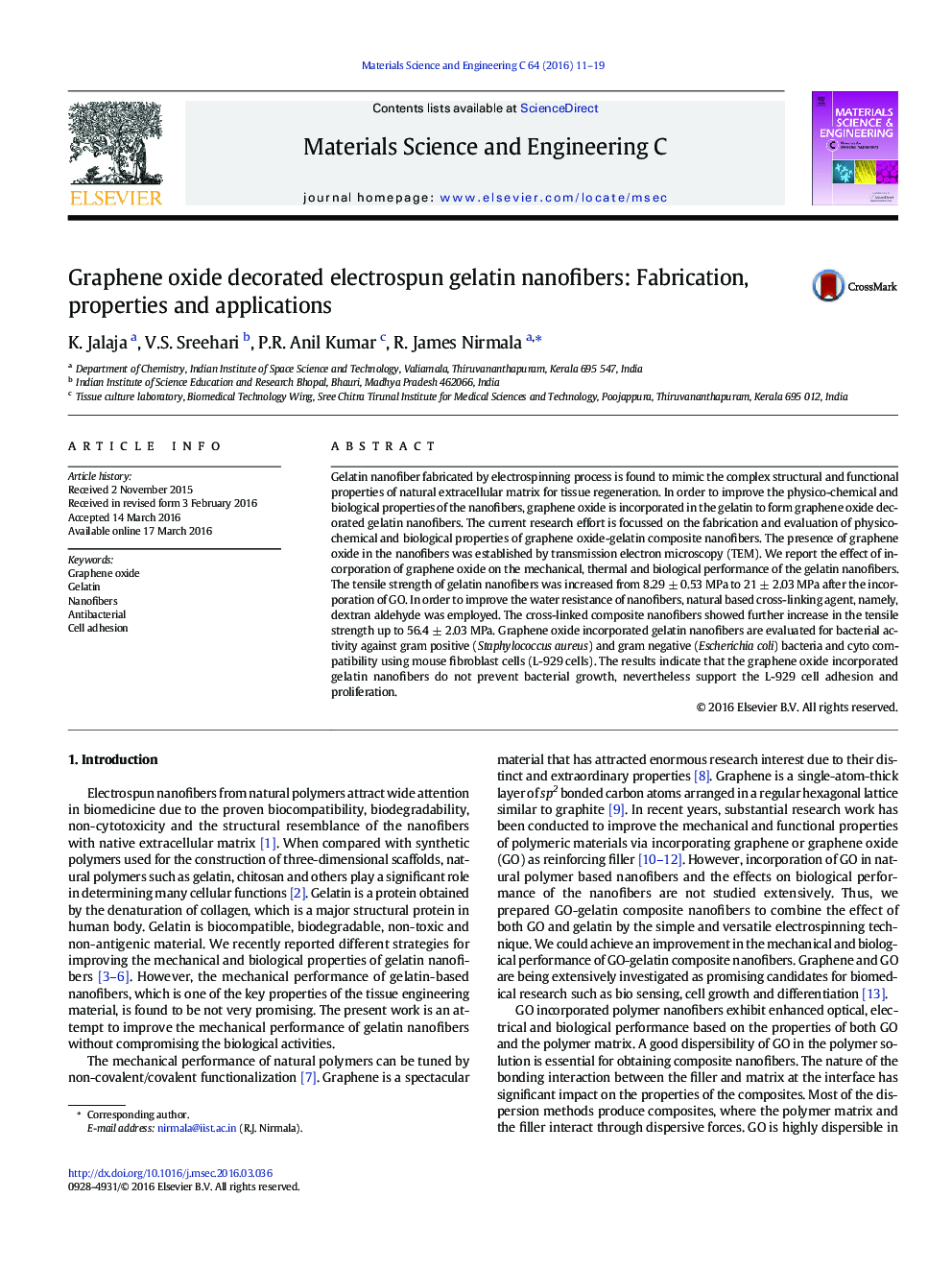| کد مقاله | کد نشریه | سال انتشار | مقاله انگلیسی | نسخه تمام متن |
|---|---|---|---|---|
| 1427930 | 1509157 | 2016 | 9 صفحه PDF | دانلود رایگان |
• Graphene oxide nano reinforced gelatin nanofibers are fabricated by electrospinning.
• Graphene oxide (0.5%) loading resulted in increased tensile strength.
• GO/gelatin nanofibers are cross-linked with dextran aldehyde.
• Composite nanofibers favoured adhesion of L-929 cells.
• GO/gelatin mats do not prevent bacterial growth.
Gelatin nanofiber fabricated by electrospinning process is found to mimic the complex structural and functional properties of natural extracellular matrix for tissue regeneration. In order to improve the physico-chemical and biological properties of the nanofibers, graphene oxide is incorporated in the gelatin to form graphene oxide decorated gelatin nanofibers. The current research effort is focussed on the fabrication and evaluation of physico-chemical and biological properties of graphene oxide-gelatin composite nanofibers. The presence of graphene oxide in the nanofibers was established by transmission electron microscopy (TEM). We report the effect of incorporation of graphene oxide on the mechanical, thermal and biological performance of the gelatin nanofibers. The tensile strength of gelatin nanofibers was increased from 8.29 ± 0.53 MPa to 21 ± 2.03 MPa after the incorporation of GO. In order to improve the water resistance of nanofibers, natural based cross-linking agent, namely, dextran aldehyde was employed. The cross-linked composite nanofibers showed further increase in the tensile strength up to 56.4 ± 2.03 MPa. Graphene oxide incorporated gelatin nanofibers are evaluated for bacterial activity against gram positive (Staphylococcus aureus) and gram negative (Escherichia coli) bacteria and cyto compatibility using mouse fibroblast cells (L-929 cells). The results indicate that the graphene oxide incorporated gelatin nanofibers do not prevent bacterial growth, nevertheless support the L-929 cell adhesion and proliferation.
Figure optionsDownload as PowerPoint slide
Journal: Materials Science and Engineering: C - Volume 64, 1 July 2016, Pages 11–19
